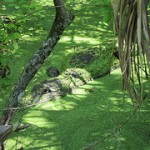The other day I saw Jurassic Park in which a wilder beast (amid shrieks of agony)is lowered into the raptor pit.
Bullies salivate at the thought of abusing their peers.
In bureaucracy the most spiritually enlightened are more likely to suffer psychic harm. Those with greater emotional intelligence find it harder to accept abuse because they are more sensitive to unfairness. The upright in character are unlikely to bully others, but they are likely to serve as bully bait for their peers.
The UK National Workplace Bullying Advice Online suggests that those who are bullied have (1) a well-defined set of values they are unwilling to compromise; (2) a strong sense of integrity; and (3) an independence in thought and deed that precludes them from joining established cliques. Kindness is an invitation for ego on display. Abusers delight in the mental turmoil of their prey, and experience pleasure when humiliating their colleagues.On a subconscious level they can sense the “victory,” the switch from calm to chaos that occurs when their victims feel their security has been threatened.
Positive self-concept is not bred in an atmosphere of mud slinging, negative politics, and cutthroat competition.Namie and Namie in The Bully at Work suggest the following emotional-psychological health damage can result from bullying behavior:
- Poor concentration, forgetfulness
- Loss of sleep, fatigue
- Stress, irritability
- Mood swings, bursts of anger
- Spontaneous crying, lost sense of humor
- Indecisiveness
- Panic attacks, anxiety
- Clinical depression
- Feelings of insecurity, being out of control
- Nightmares about the bully
- Obsessive thinking about the bully
- Always anticipating the next attack (hyper-vigilance)
- Shattered faith in self-competence, feelings of worthlessness
- Shame, embarrassment, and guilt
- Self-destructive habits: substance abuse, workaholism
- Altered personality – unrecognizable to family and friends
- Post-traumatic stress disorder
- Violence against others that occurs after repeated instances of work abuse
Harry Oldfield, a renowned energy field expert, noted that the residue of an encounter with a mean-spirited, nasty, and negative individual displayed as red dashes of energy [indicating a hostile encounter] when photographed using Polycontrast Interference Photography (PIP) (Solomon & Solomon, 1998). The photographic effect lasted for several days afterward:”The response can continue long after the negative event, so that we live in a closed circuit of resentment and offenses against our neighbor or world, a self-fulfilling and self-perpetuating loop” (Pearce, 2002).
Negative energy, or “mental ama” is promoted by tension and conflict that flows from interaction with toxic people (Chopra, 1991). To the extent that companies tolerate (and in some cases condone) bullying behavior, they are shooting themselves in the foot.
__________________________________________________________________________________________________________________
References
Chopra, D. (1991). Perfect health: The complete mind/body guide. New York, NY: Harmony Books.
Pearce, J. C. (2002). The biology of transcendence: A blueprint of the human spirit (p. 150). Rochester, VT:Park Street Press.
Solomon, J., & Solomon, G. (1998). Harry Oldfield’s invisible universe: The story of one man’s search for the healing methods that will help us survive the 21st century. New York, NY: HarperCollins.





Recent Comments